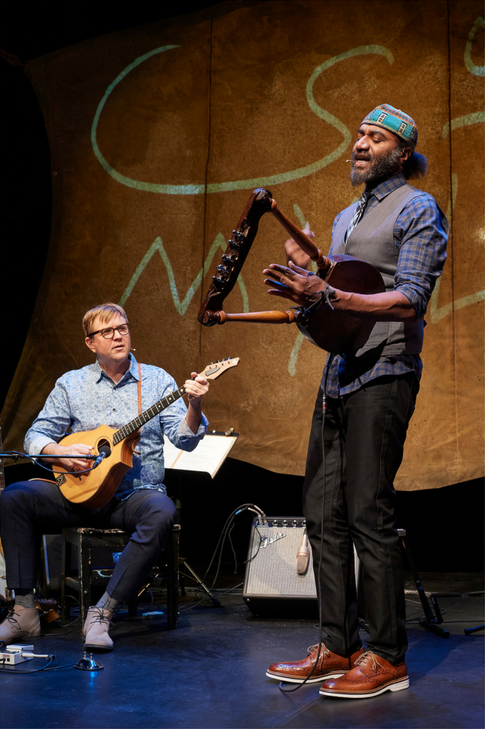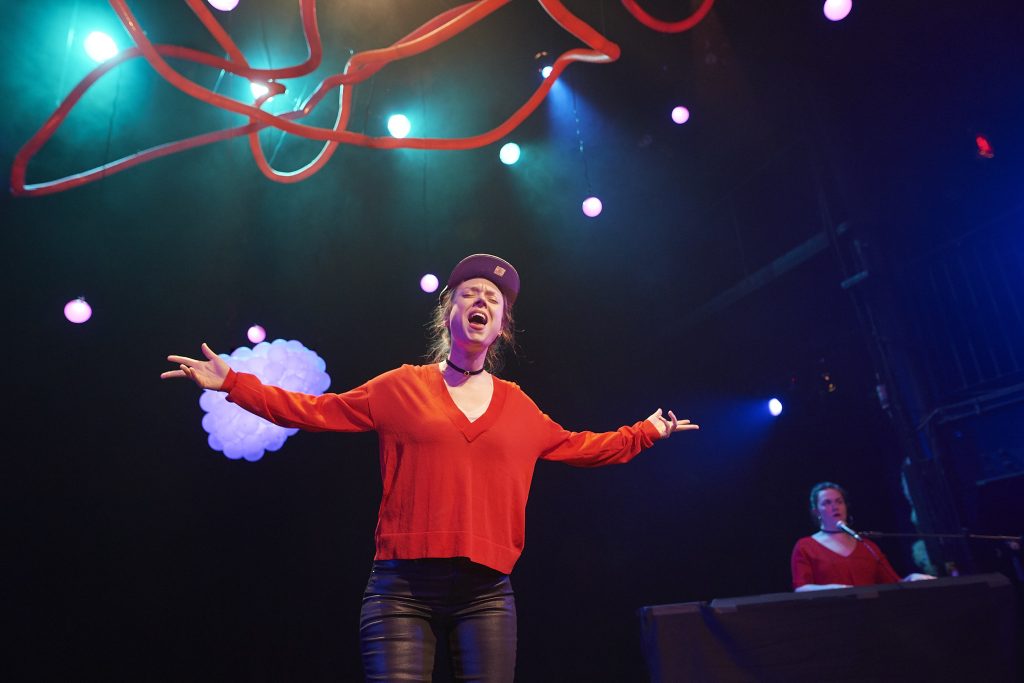Relaxed performances are designed to welcome audience members and their families who could benefit from a more relaxed environment, including those on the autistic spectrum. The set-up includes: A pre-show introduction to the actors/characters and a discussion about the play. The performance may have less intense sound and lighting effects (if needed), but there is always a very low level house light in the audience. Importantly, there is the ability for anyone to come and go from the space. Plus, there is a calm space outside the theatre.
Access our general Theatre Passe Muraille Visual Story here.
Photo by Michael Cooper | John Millard and Waleed Abdulhamid in John and Waleed | Set & Costume Design by Joanna Yu | Projection & Lighting Design by Kaitlin Hickey | Associate Video Designer: Lily Ross-Millard
If you have any questions, please contact the Box Office by phone at 416-504-7529 or Jenn Sartor by email or by phone at 416-504-8988 x2127
Here are answers to some frequently asked questions about Relaxed Performances:
Here are answers to some of the other frequently asked questions about Relaxed Performances:
Why might I want to go to a Relaxed Performance?
Many people may choose to attend a Relaxed Performance, either as an access requirement or because they like the inclusive environment.
Relaxed Performances take a laid-back approach to noises or movement coming from the audience. They give everyone permission to relax and respond naturally. Many people feel that Relaxed Performances offer a more dynamic theatrical experience, which benefits everyone.
What makes a Relaxed Performance ‘relaxed’?
Relaxed Performances don’t need to be complicated. The responsibility for making a show ‘relaxed’ is shared by the audience, the venue and the performers. The elements that are included are:
- A clear explanation for all audience members about what a Relaxed Performance is when you book your tickets
- Pre-show information describing what to expect from the show
- Staff who take an inclusive approach from start to finish
- An introduction at the start of the show to remind the audience that it’s a Relaxed Performance and giving anyone who needs to move or be noisy the freedom to do so
- Consideration given to sound and lighting levels, taking into account sensory sensitivities (eg. Any jarring light effects will be lessened or removed while any strobe-light effects will be removed from the show entirely)
- A quiet space outside the auditorium where people can go during the show if they need to
- The ability to come and go from the theatre as needed
If someone’s making noises or moving about, will it distract me from the performance?
Most people edit out background noise all the time, particularly when they know why it’s happening. If a performance is holding your attention, experience tells us you won’t get distracted. People who have been to a Relaxed Performance often say the relaxed atmosphere has enhanced their experience.
The history of Relaxed Performance
Relaxed Performances have grown out of work around autism-friendly cinema and theatre events. While this movement has its roots in the 1990s, its momentum has increased significantly in the past six years.
In 2012 eight theatres in the UK worked together on the Relaxed Performance Project led by Include Arts, piloting Relaxed Performances across a number of venues. The popularity and scope of Relaxed Performances has grown, as has understanding about who benefits from them. They are no longer associated solely with children’s work or with specific conditions. Many established venues and performers are offering Relaxed Performances on a regular basis. We at Theatre Passe Muraille have been doing Relaxed Performances in our venue for three years, learning more and more with each one.
Thank you to our Access Sponsor




